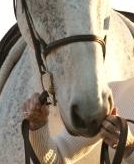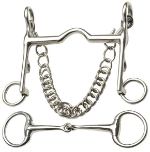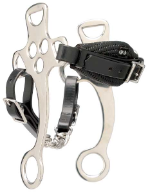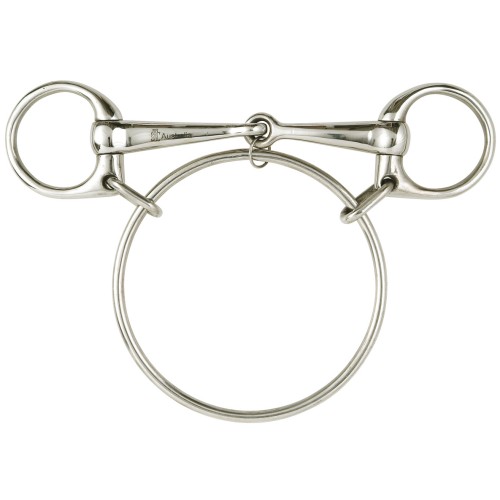Aussie Saddlery Online Bit Guide
Some simple bit solutions that you can try:
- If you need more brakes, try a Pelham or gag bit. Click here https://aussiesaddlery.com.au/jointed-mouth-pelham/
- If you need more steering, try a Tom Thumb snaffle or full cheek bit Click here https://aussiesaddlery.com.au/tom-thumb-stainless-steel-loose-ring-bit/
- If you need a softer bit that is gentler on the horse, try a Roller bit or French link bit. Click here https://aussiesaddlery.com.au/platinum-3-loose-ring-bit-with-roller-ss/
- If your horse shakes his head and resists the bit, have you considered using a bitless bridle? Click here https://aussiesaddlery.com.au/platinum-bitless-bridle/
- Does your horse show signs of not accepting the bit or becomes sore in the mouth? Try some bit balm. Click here https://aussiesaddlery.com.au/bit-butter-mouth-softening-balm-travel-size-57gm/
An introduction to Snaffles and Curbs Bits
Choosing the right bit for your horse can be a little confusing, y when you consider all the varieties of bits available. To help you understand the difference between D-rings and eggbutts, Waterfords and Weymouths, we’ve prepared an simple bit guide that provides information about the most common styles of bits as well as some of the more unusual ones.
|
Snaffle Bit |
Curb bit |
Double Bridle bit |
Within the vast world of bits there are two categories that the majority of bits fall into: snaffles and curbs, and both can be used for English or western riding. A snaffle is recognizable by the rings attached to either side of the mouthpiece. The reins attach to the rings and guide the horse through direct contact. For example, when you pull on the right rein the horse turns right in response to pressure on the corners of its mouth. This teaches the horse to bend laterally. When working on downward transitions and halts, snaffles exert pressure on the bars of the horse’s mouth, causing the horse to flex at the poll and bend vertically.
In contrast, curb bits work on leverage. Reins are attached to shanks, the vertical bars attached to the bit rings. When you pull back on the reins, the shanks create a lever action and pressure is exerted on the horse’s lower jaw, the bars of the mouth and the poll via the crownpiece of the bridle. In general, a longer shank translates into more leverage and hence a more severe bit. Pressure is also felt on the horse’s chin, thanks to the curb strap or curb chain. Curb bits encourage the horse to lower their head and flex at the poll. Though curb bits can be ridden with two hands, in western riding the curb permits the rider to guide their horse through neck reining.
Snaffles and curbs are available in a wide range of mouthpieces, and each style—from smooth to twisted and low or high ports—provides a certain degree of severity. That’s why it’s important to choose a bit wisely, because once a horse’s mouth has become dull or sore due to a strong bit in rough hands, it’s difficult to re-school the horse to become light and responsive once again.
Choosing the right bit width
The simplest way to select the right bit for your horse is to measure the width of the horses mouth (from lip to lip on your horse), and adding ¼” to get the proper measurement for your bit.”
A bit should fit comfortably across the mouth with a small space on either side.
In most cases, the simple rule for bit fitting is,
Small Pony= 4" (Shetland/Small Pony)
Large Pony= 4.5" (Pony)
Galloway (14-15hh)= 5" (Cob)
Hack (15hh and over)= 5.5" (Full)
Of course there are always exceptions to the rule as some breeds may have a fine mouth e.g- Riding Pony
Or larger mouth e.g- Warmblood 
Want to know how to correctly measure your bit? Watch our youtube how to guide here








